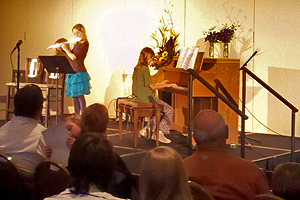November Music Blog 2022 #1
At the Colorado School of Music we teach a variety of instruments ranging from piano lessons, guitar lessons, vocal lessons, voice lessons, violin lessons, viola lessons, drum lessons, percussion lessons, ukulele lessons, trombone lessons, tuba lessons, euphonium and other orchestral instruments. We have students come from Denver, Lakewood, Arvada, Wheat Ridge, Morrison, Littleton, Golden and Evergreen. Contact us to come and try a lesson. www.coloradoschoolofmusic.com info@coloradoschoolofmusic.com or 303-526-9865
Today I will be discussing the importance of know your music theory as well as discussing some basic music theory.
The best analogy I can give regarding knowing your theory is we all know 2+2=4 and if you can’t add you probably can really do any other math correctly. Music is math based and relates very much the same way. If you don’t know the notes in a C major scale you probably could tell me the notes in a C chord or how its constructed.
Im going to take a little time and explain some very basic and usable music theory now.
When you play, sing or write a major scale what ever the scale of key you are executing is, You start on that note and then continue up the music alphabet. To start we are going to use the C major scale as our example key. You may be saying what is a key? There are 12 major keys and 12 relative minor keys. Today I will only be using the key of C major. Reason for this is the key of C has no flats and no sharps. (A flat lowers a note by one half step and a sharp raised it a half step.) When we sing, play or writing the C major scale it would appear as this: C,D,E,F,G,A,B. Each key has 7 notes. From each scale note or scale degree you can build a chord.
A chord is defined as two or more notes played simultaneously. Most chords will have 3 or more notes. If we take the first scale degree from the key of C it would be C. Now to our C note we are going to add an E note. Now we are playing the two notes of C and E and now let’s add a G note to this group of notes or chord. Playing C-E-G together gives us a proper C major chord. The definition of your major chord is root third and fifth.(R-3rd-5th) If you are able to play the chord listen to how it sounds and makes you feel. Music has is one of the unique arts that has the ability to tap into our emotions. So yes how does the C chord make you feel. I like to think of a C major chord as a sunny day or happy news. If we go to the next scale degree of C it would be D. If we apply the same theory to the D note we will be building a D minor chord. The theory will be the same but we will get a different value chord. Our D minor chord is constructed as D-F-A. The difference between the C major chord and D minor is the 3rd of the chord. In music we have half steps and whole steps and from these we build our major scale. A major scale has whole, whole, half, whole, whole, whole, half step. If you can get behind a keyboard or piano this theory make whole lot more sense. When looking at a piano you will see there are two spots where there is not a black key between the white keys. Those are the half steps and the rest of the white keys have a black key between them and those are the whole steps.(from white key to white key with a black key in between.) This how we arrive at W,W,H,W,W,W,H for our major scale. When you look at this distance between the first scale degree C and the 3rd scale degree of E you will see there are two whole steps between the two notes. This is call a major 3rd interval and defines your major chord. Now if we look at D and check how far away E is from D you will see there is one whole step and one half step. This is called a minor 3rd and defines your minor chord. When you look at the 5th of each of these chords you will see they have the same distance from each of the chords. C to G is W,W,H,W and this is the same distance from D to A from our D minor chord. The minor chord definition is R-b3rd-5th. As you can see and hear moving one note just a half step creates a whole different sound.
Please contact us to come in for your $10 introductory lesson from one of our great instructors or myself to learn further about music theory. We offer guitar lessons, piano lessons, drum lessons, violin lesson, Ukulele lessons, vocal lessons as wells as some orchestral instruments and more.
303-526-9865 or info@coloradoschoolofmusic.com
